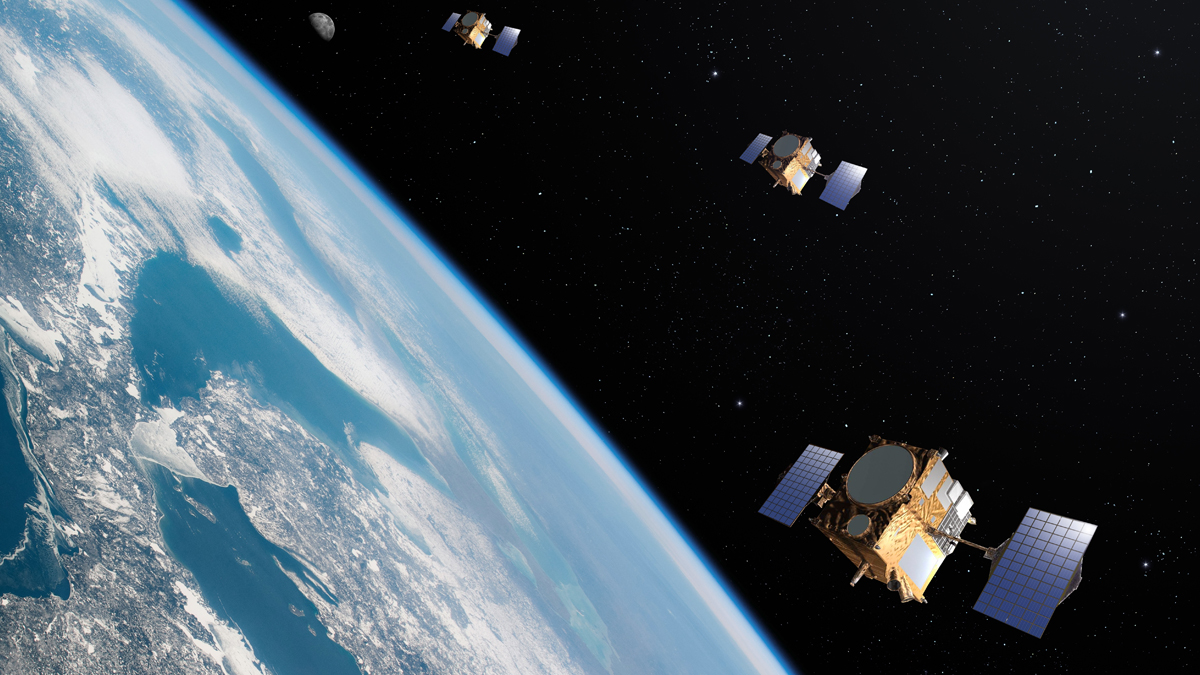
Constellations recently spoke with two experts from the International Telecommunications Union (ITU). Ellie Xiuqi Wang, Head of the Data Treatment Section of Space Service Department, and Chuen Chorn Loo, Head of the Space Publication and Registration Division, joined the podcast to discuss the rapidly changing world of smallsat.
The two spoke about the ITU smallsat handbook’s support of new market entrants, regulatory management of large constellations and the sustainable use of in-orbit resources. Key takeaways from the discussion addressed how the small satellite handbook can be used as a reference tool and how regulatory bodies manage mega constellations.
Takeaway 1: The ITU small satellite handbook is designed as a reference tool to the regulatory landscape of smallsat.
The smallsat industry is expecting rapid growth in the coming years, including a significant number of new market entrants. Small satellites have lower financial and technical barriers, are more accessible and affordable, and offer wider and easier access to space services for countries all over the world. To keep pace with the market, the ITU issues a small satellite handbook. “The rapid growth of the small satellite industry, particularly over the last decade, motivated the creation of the ITU-R Handbook on Small Satellites,” said Wang. “The handbook serves as a foundational resource for newcomers to learn about small satellites regulations and industry trends.”
The handbook also addresses the rapidly changing nature of the satellite sector. “Given the rapid growth in the small satellite industry, we often find that once we have completed a piece of documentation, the industry and the underlying technology has moved ahead already,” Wang stated. “We continue to encourage contributions from all actors in the small satellite industry for inclusion in future updates.”
Takeaway 2: ITU regulations ensure sustainable use of orbit and monitors potential harmful interference.
Loo expanded on the responsibilities of the organization. One of the main goals of the ITU, he said, is to monitor and enforce regulations on small satellites to ensure sustainable activities in orbit. For example, to address the issue of existing debris in orbit, the ITU sent a circular letter inviting members to share their strategies for post mission de-orbit and disposal of non-GEO satellite orbit space stations, and all input was published on their space sustainability gateway webpage.
The ITU also monitors potential harmful interference. But these cases are few and far between. “In terms of harmful interference, the ITU is made aware of it only when there is an official complaint registered,” said Loo. “We have relatively few cases of reported instances of harmful interference in most frequency bands.”
According to ITU statistics, 99.94% of registered spectrum was free from reported harmful interference. To address any reports, the ITU “makes use of the space radio monitoring facilities… to geolocate the source of harmful interference.” The most prominent issue of interference today is in radionavigation-satellite service (RNSS), and Loo urged administrations to apply necessary measures to prevent and mitigate harmful interference that would affect RNSS.
Takeaway 3: Mega constellations like Starlink and OneWeb pose significant regulatory challenges.
Mega constellations provide massive benefits to the entire space industry by widening coverage of broadband satellite service to a global scale. But they also present challenges, especially to regulatory organizations like the ITU. “Due to their size and complexity, [they] stretch the boundaries of existing regulations,” said Loo.
In 2014, when the ITU first started processing the files from the first large constellations, the existing software simply couldn’t handle them. And it’s still difficult to this day. “We have to invent new ways of publishing this information,” he said.
One particular challenge is managing the equivalent power flux density limits (EPFD), which are meant for the protection of geostationary satellite orbits. These limits were adopted more than twenty years ago, and now the ITU must ensure these limits are still effective in preventing harmful interference. “For large constellations,” the computation time for the EPFD takes a significant amount of time for execution,” which often results in large delays and anxiety on the part of the satellite, Loo explained.
Takeaway 4: New technologies like AI will influence the nature of smallsat.
New technologies are also changing the smallsat landscape. “Unlike traditional satellites, which require decades for new technologies to be flag proven before they’re actually utilized in space, small satellites have shown that they can embrace new technologies rapidly, within months in some cases,” said Loo. Artificial intelligence (AI), in particular, could change the way operators manage small satellites. “Due to scarcity of bandwidth, using AI/machine learning on board a satellite can help to analyze the huge amount of data that the satellites collect,” said Loo, “and select which data is finally transmitted to Earth, thereby optimizing the use of frequency.”
But operators should be careful in how they use AI. “AI cannot be allowed to be so autonomous that it starts to make frequent use of frequency outside of the Radio Regulations,” said Loo. “I firmly believe that regulations need to continue to keep pace with these rapid advancements in technology.”
For more on satellite launch, access to radio spectrum and preparing for rapid industry growth, listen to the full podcast episode.
Explore More:
Is the SmallSat Industry Experiencing Consolidation?
Podcast: GSaaS, Smallsat Launches and Thinking About the Ground First
Space Intel Report: Starlink Outage is a Reminder of the Importance of Network Diversity
The SmallSat Market’s Goldilocks Moment: Too Hot or Too Cold?
